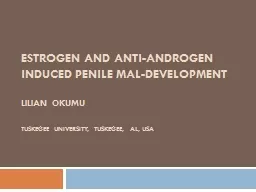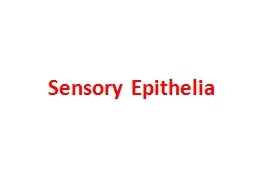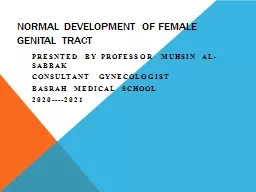PPT-WELCOME INTRODUCTION The epithelia of the female genital tract are sensitive
Author : myesha-ticknor | Published Date : 2018-11-06
In general estrogen promotes amp progesterone inhibits squamous cell maturation Hormones may influence the morphology staining characteristics of the cervical endometrial
Presentation Embed Code
Download Presentation
Download Presentation The PPT/PDF document "WELCOME INTRODUCTION The epithelia of ..." is the property of its rightful owner. Permission is granted to download and print the materials on this website for personal, non-commercial use only, and to display it on your personal computer provided you do not modify the materials and that you retain all copyright notices contained in the materials. By downloading content from our website, you accept the terms of this agreement.
WELCOME INTRODUCTION The epithelia of the female genital tract are sensitive : Transcript
Download Rules Of Document
"WELCOME INTRODUCTION The epithelia of the female genital tract are sensitive "The content belongs to its owner. You may download and print it for personal use, without modification, and keep all copyright notices. By downloading, you agree to these terms.
Related Documents














